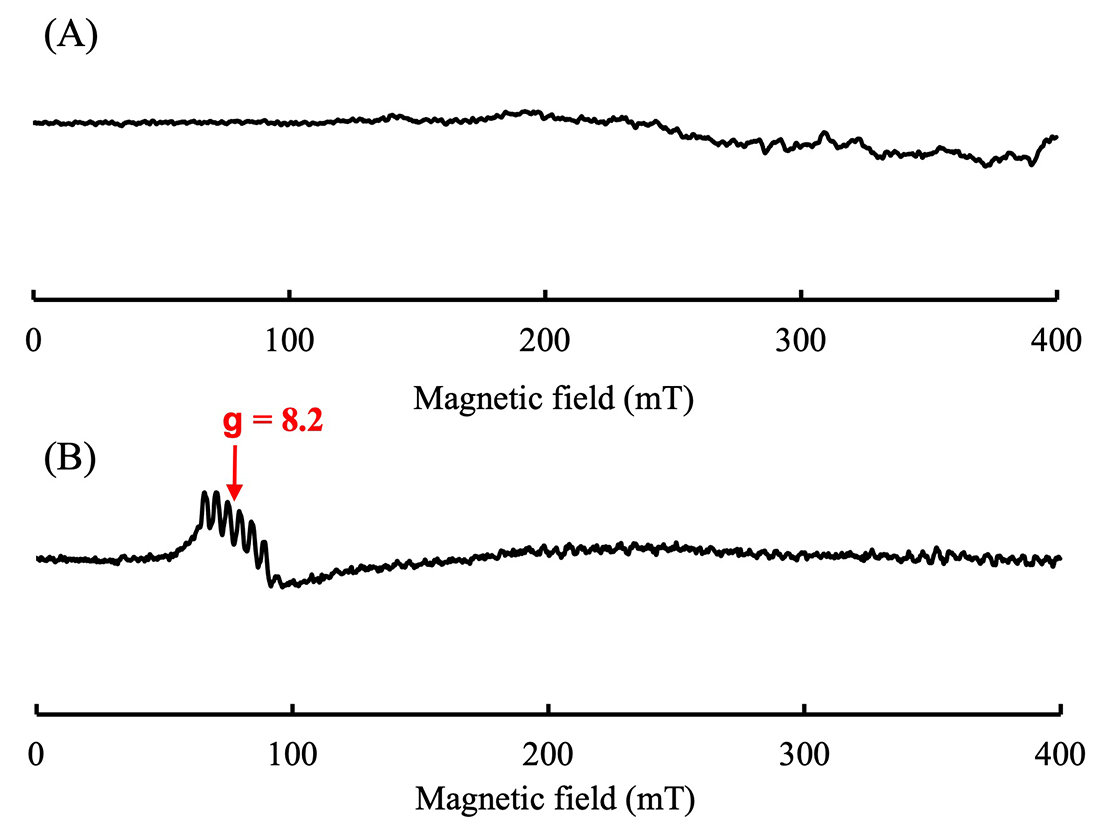Observation of forbidden transitions in Mn (III) porphyrin complexes
ER210004E
The dual mode cavity (ES-14040DMC) can be used in combination with a variable temperature controller, allowing ESR observations at various temperatures. In this issue, we will introduce a cryogenic measurement combined with a liquid helium variable temperature system (ES-CT470). Please refer to application note ER210003E for details on the dual mode cavity.
Example of ESR measurement
ESR spectra of Mn (III) porphyrin complexes (Figure 1) were observed at cryogenic temperatures (5 K). Mn (III) (S = 2, I = 5/2) has a 3d4 electron configuration. Very few ESR papers have been reported on d4 ions because they have short spin-lattice relaxation time and large zero-field splitting. Mn (III) was measured at 5 K in order to extend the spin-lattice relaxation time as much as possible. While no clear signal was observed in the perpendicular mode (Figure 2 (A)), a forbidden transition with six hyperfine splitting by Mn was observed at g = 8.2 in the parallel mode (Figure 2 (B)).
Observation of forbidden transitions using the parallel mode may provide clues for investigating the molecular structure and the electronic state of the paramagnetic species that could not be examined so far.

Figure 1. Mn (III) porphyrin complexes

Figure 2. ESR spectra of Mn (III) porphyrin complexes in perpendicular and parallel modes.
(A) Perpendicular mode (Frequency: 9,332 MHz) (B) Parallel mode (Frequency: 8,793 MHz)
- Please see the PDF file for the additional information.
Another window opens when you click. 
PDF 360.7KB
SEARCH APPLICATIONS
Related Products
Are you a medical professional or personnel engaged in medical care?
No
Please be reminded that these pages are not intended to provide the general public with information about the products.
